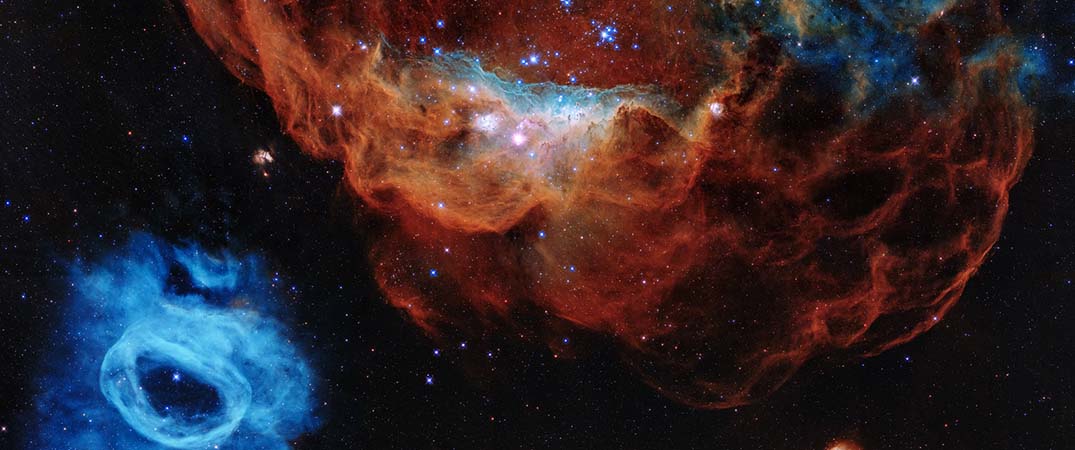In 1609, visionary Italian scientist Galileo Galilei turned the newly invented optical device of his day — the telescope — to view the heavens. His observations conclusively showed that there were celestial bodies (the moons of Jupiter) that did not revolve around the Earth, launching a revolution that forever changed our view of an Earth-centered universe.
Almost four centuries later, the launch of NASA’s Hubble Space Telescope aboard the Space Shuttle Discovery in 1990 started another revolution in astronomy.
Developed as a partnership between the US space program and the European Space Agency (ESA), Hubble orbits 340 miles above Earth’s surface. Its gaze outward lies beyond the distorting effects of the atmosphere, which blurs starlight and blocks some important wavelengths of light from reaching the ground.
This vantage point allows Hubble to observe astronomical objects and phenomena more consistently and with better detail than generally attainable from ground-based observatories.
The telescope’s sensitive cameras and spectrographs can view objects as nearby and small as colliding asteroids to distant star-forming galaxies that date back to when the universe was only three percent of its current age.
In fact, Hubble observations have played a key role in discovering and characterising the mysterious dark energy that now appears to permeate space. Results like these have changed our fundamental understanding of the cosmos.
Well into its third operational decade, Hubble is still extremely productive. The orbiting telescope has taken over 1-million observations and provided data that astronomers have used to write more than 17 000 peer-reviewed scientific publications on a broad range of topics, from planet formation to gigantic black holes. These papers have been referenced in other publications approximately 900 000 times, and this total increases, on average, by more than 150 per day.
Every current astronomy textbook includes contributions from the observatory. Today’s college undergraduates have not known a time in their lives when astronomers were not actively making discoveries with Hubble data.
Hubble’s discoveries and memorable photos have also reinvigorated the public’s interest in astronomy. Along with pictures of the telescope and the astronauts who launched and serviced it during six space shuttle missions, certain memorable science images have become cultural icons. They appear regularly on book covers, musical albums, clothing, TV shows, movies and even ecclesiastical stained-glass windows.

This image of a majestic spiral galaxy, called “Rubin’s galaxy,” launched Hubble’s 30th anniversary year.
Credits: NASA, ESA, and B. Holwerda (University of Louisville)
Featured picture: This image, nicknamed the “Cosmic Reef,” was released on Hubble’s 30th birthday. The red nebula and its blue neighbor are part of a star-forming region 163,000 light-years away.
Credits: NASA, ESA, and STScI

